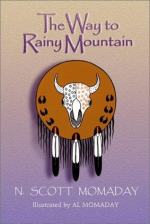|
This section contains 391 words (approx. 1 page at 400 words per page) |

|
The Way to Rainy Mountain Summary & Study Guide Description
The Way to Rainy Mountain Summary & Study Guide includes comprehensive information and analysis to help you understand the book. This study guide contains the following sections:
This detailed literature summary also contains Topics for Discussion on The Way to Rainy Mountain by N. Scott Momaday.
In The Way to Rainy Mountain, Momaday traces his ancestral roots back to the beginning of the Kiowa tribe. While Momaday seems to have always known about his ancestry, the death of his grandmother prompts a deeper and more personal exploration of his family background. In order to get as close as possible to his roots, Momaday returns to his Grandmother's house where the spirit of the Kiowa tribe is very strong.
The book provides the reader with a series of oral stories from Kiowa tradition written down. The stories link together to narrate the entire life span of the Kiowa tribe from beginning to end. Momaday also provides explanatory information for the stories. Each story is followed by a short account of the factual event the story is based upon. Together the stories and the facts work to create a complete picture of the Kiowa way of life. The stories explain the world as the Kiowa saw it.
Kiowas were very tied to the earth. Their personal history maintains that the tribe came into being by entering the world through a hollow log. Additionally, the Kiowa were a tribe of hunters very dependent on the buffalo for their existence. Without the buffalo the Kiowa could not survive and when the buffalo herds died out, so too did the Kiowa. The Kiowa had other strong beliefs. They maintained a ritual Sun Dance that revolved around a buffalo sacrifice and prayers to Tai-me. Tai-me is said to be a sort of savior figure for the Kiowa. When the Kiowa were facing difficult times Tai-me came to the tribe and led them to a better life.
Most members of the Kiowa tribe who remembered the ancient ways have long since passed away. However, when the narrator returns to his Grandmother's house and Rainy Mountain, he is able to vividly recall the stories his Grandmother used to tell him. As the narrator works through these stories, he learns a great deal about the Kiowa and his own history. The narrator is able to step away from his everyday life and travel back to another time. The time the narrator spends exploring his ancestral roots through memories and physical expeditions to various locations around Rainy Mountain provide him with a newfound respect for his ancestors and for his present day existence.
Read more from the Study Guide
|
This section contains 391 words (approx. 1 page at 400 words per page) |

|



